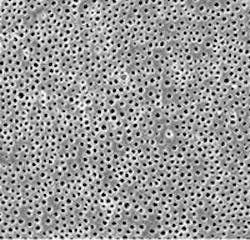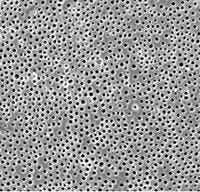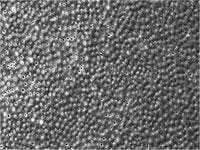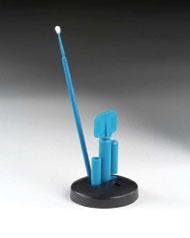Fluoride varnish to the rescue
by Donna Radjenovich, RDH, BS
Dentinal sensitivity is reported to occur in 20 to 30 percent of adults with exposed dentin in the United States. This type of sensitivity is described as the short, exaggerated, painful response elicited when exposed dentin is subjected to certain thermal, mechanical, or chemical stimuli. The cause of the sensitivity is due to the exposure of the dentin due to gingival recession, abrasion, erosion, periodontal therapy, and/or defective restorations.
Fortunately, not all individuals with exposed dentin experience dentinal sensitivity. The etiology of dentinal sensitivity is multifactorial as is the stimulus/response unique for the host. Stimuli that may elicit a pain response are categorized as tactile, thermal, chemical, or osmotic. It is important for dental professionals to understand and appropriately utilize treatment options which address these areas of discomfort for the patient.
The option discussed here is sending fluoride varnish to the rescue.
What exactly is this "wonder" material? Fluoride varnish is a resin-based fluoride containing a 5 percent sodium fluoride. The "varnish" is painted directly onto the tooth. It has been approved by the Food and Drug Administration (FDA) as a treatment for dentinal sensitivity, as well as for use as a cavity liner. The effect of fluoride varnish can be seen in figure 1.
When incorporating fluoride varnish into your practice, a number of characteristics should be considered to benefit both patient and clinician: patient safety, acceptance, and ease of application. When considering patient acceptance, the flavor and color of the fluoride varnish are key factors.
Traditionally, fluoride varnish has been flavorless. After application, the varnish left a distinct yellow pigment on the tooth after the material has dried and hardened. As a result, the patient would leave the office embarrassed to smile. As you consider benefits to the patient, this cosmetic factor weighs heavily toward patients' non-acceptance of fluoride varnish treatment.
Another element of patient acceptance lies in its ease of application. Currently, fluoride varnish is available in multi-dose as well as unit-dose applications. The multi-dose application is cumbersome. The clinician must first place the material into a dappen dish estimating the correct amount needed. Too much of an application and waste of the varnish can easily occur with multi-dose application.
Technology continues to advance, assisting clinicians in delivering more effective, efficient, and comfortable treatment options for their patients. Dental manufacturers introduce new products to resolve practice issues.
Dentsply Professional has entered the market with an innovative fluoride varnish that addresses the concerns of flavor, color, and application. ALLSolutions® 5 percent sodium fluoride varnish contains a pleasant raspberry flavor that enhances the experience of the application process.
The most distinguishing feature, though, is the absence of a coloring agent. ALLSolutions is the only fluoride varnish that dries to a tooth color. The patient can now leave the office with a pleasant raspberry taste in their mouth and smiling a wide, tooth-colored smile.
The ease in using products is a benefit for both the patient and clinician. A fluoride varnish product that is unit-dose in application provides a convenient mechanism for storing product on-hand. The clinician simply opens one single-unit dose vial of AllSolutions to successfully deliver the product on the affected areas. The patient will be pleased by the short chair time needed for application.
When the proper application protocol is followed, the fluoride varnish remains on the teeth for a number of hours, releasing fluoride into the immediate environment (especially the interproximal and cervical areas where it is most needed). For those patients with continued dentinal sensitivity, reapplication can occur every six months.
Fluoride varnishes contain a highly concentrated fluoride content. As with any fluoride application, care should be taken to ensure that the proper application procedure is followed, as any material left in the oral cavity has the potential to be swallowed. With proper application, the amount of fluoride remaining in the oral cavity is decreased.
Dentinal sensitivity is currently a dental issue with the general population and will continue to increase with the graying of the population. Fluoride varnish provides a quick remedy for this sensitivity using a non-invasive method which is readily accepted by patients.
The protocol for AllSolutions® 5% Sodium Fluoride Varnish is as follows:1. Prophylaxis of surface to be treated.
2. Rinse with water.
3. Remove excess water and saliva.
4. Dispense fluoride varnish as per manufacturer's directions for use. (Remember to look for material that has a unit-dose dispensing system).
5. Paint a thin layer approximately .5mm thick of varnish directly on the teeth using a disposable applicator brush. Note that the varnish sets in a few seconds as it comes in contact with saliva. It will leave a fluoride-rich layer adjacent to the tooth surface.
6. Instruct patients to avoid brushing their teeth and eating for two hours after treatment. Patients should also avoid mouth rinses that contain fluoride for the remainder of the day.
Donna Radjenovich, RDH, BS, is a clinical educator for Dentsply Professional. She can be contacted at (414) 427-7774. Donna received her bachelor's of science degree in dental hygiene from Marquette University and has 15 years of clinical experience in periodontal and cosmetic dental settings. Her emphasis is clinical application of new theories in ultrasonic instrumentation, airpolishing, whitening and sealant techniques.



